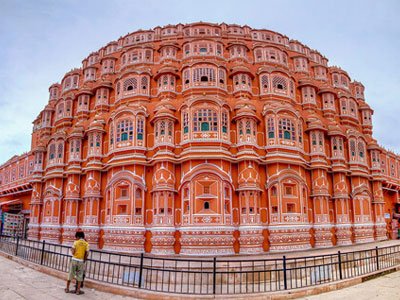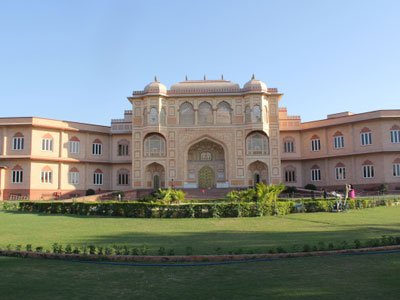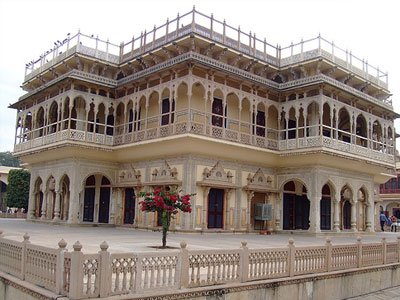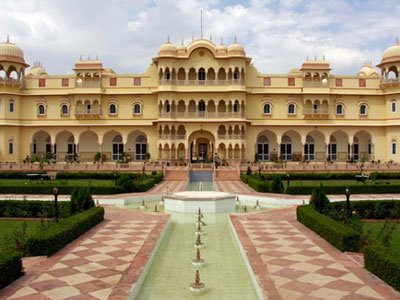Jaipur Package
The Capital of the modern state of Rajasthan, Jaipur is a modern city built according to the specifications laid down in ancient architectural texts. Known as the pink city on account of the flush colour of its sandstone palaces, it is a major centre for handicrafts. Its former capital, Amber, consists of fortifications with an interesting rang of highly decorated public and private apartments.
HISTORY
Jaipur, the ‘Pink City’, has been the capital of erstwhile Jaipur state since its inception in 1727 AD, It was founded by Sawai Jai Singh II, a great ruler as well as renowned mathematician and astrologer. Vidhyadhar Bhattacharya, designed Jaipur as per the Hindu treatise, Shilp Shastra. In 1876 Jaipur dressed itself in pink to welcome Prince Albert, consort of queen Victoria, and earned the epitaph ‘Pink City'. The excellent handicrafts of Jaipur are exquisite gold jewellery enameled or inlaid with precious stones, blue pottery, carving on wood, stone & ivory, block print & tie & dye textiles, handmade paper etc.
Hawa Mahal
Located to one side, but a part of the City Palace complex, Hawa Mahal is best viewed from the street outside. If is were not for the bustling bazaar all around, it would have been easy to mistake it for a film set, so exquisitely is it proportioned, and so incongruous is its delicacy. Hawa Mahal consists of five tiers of corridors on the inside, with pierced screen windows that overlook the street below. It is believed the women of the royal zenana would sit concealed behind these screens to see life in the city beyond the walls of the palace.
City Palace
As may be expected, the City Palace complex lies at the heart of the city. Getting in is simpler than it once was. Though the erstwhile maharaja and his family and close friends use the triple-arched Tripolia Gate to enter their section of the palace, most visitors are ushered in through Atish Pol which is located close to the royal stables, cross from here to Chandni Chowk or Moonlit Square and then on to Gainda ki Deorhi. At the heart of the complex is seven-tiered Chandra Mahal where the erstwhile royal family is still in residence, though only a small part of the apartments are occupied.
Jantar Mantar
A stone observatory, part of the city palace complex, Jantar Mantar is one of several other astronomical observatories created by Maharaja Sawai Jai Singh 2nd (other are in Delhi, Banaras, Ujjain). These concrete masonry instruments were used to measure everything from altitude to time, and map the movement of the planets and the stars. Jai Singh 2nd had a passion for astronomy and used astronomical inventions from different of these observatories, the largest of which in is Jaipur
Ram Niwas Bagh
A lush spacious garden with a zoo, an aviary, a greenhouse, a herbarium, a museum and popular sports ground. It was built by Sawai Ram Singh 2nd in 1868 A.D. as a famine relief project. The Albert hall, fine example of Indo Sarcenic style of architecture designed by Sir Swinton Jecob, was opened later with an exquisite collection of sculptures, paintings, decorative wares, natural history specimen, an Egyptian mummy & celebrated Persian carpet. Recently, the Rabindra Manch with an auditorium, a modern art gallery and an open air theatre, has been added to promote cultural events.
Laxmi Narayan Temple (Birla Mandir)
A new temple, also known as Birla Temple, built entirely of marble, this is a showcase of the continuing skill of the mason and the sculptor.It is very famous for its architure, Lots of pilgrimage visit this place from different parts of India & Abroad.
BM Birla Planetarium
The planetarium offers unique audio-visual education and entertainment with its modern computerized projection system. For school groups concessions are available. Closed on last Wednesday of every month.
Maharaja Sawai Man Singh II Museum
Located within the city palace complex and nestled amidst old buildings, temples and the palace quarters, this museum was founded in 1959 by Maharaja Swai Man Singh II.
Nahargarh Fort
It is a spectacular fort located on the edge of the Aravalli Hills in Jaipur. Adventure lovers can reach the fort with a two kilometer long trek. Nahargarh literally means ‘abode of tigers’. The Fort and the palace were used by members of the royal Rajput family as their entertainment house. The marvelously sculptured interiors have numerous rooms connected by wonderfully painted corridors. The architecture is a blend of Indo-European style.
How To Reach Jaipur
By Road: An excellent connection to Delhi by Shatabdi Express and the Pink City Express. Other connections to Jaipur are from Bikaner, Jodhpur, Udaipur, Ahemadabad, Secunderabad and Lucknow. Road A network of reasonably comfortable tourist buses, run by road corporations of Rajasthan, Haryana and others.
By Air: Jaipur has its own airport, and is well connected to all other tourist and business centres.
By Rail: The city is well connected by trains with all the major places in India.








